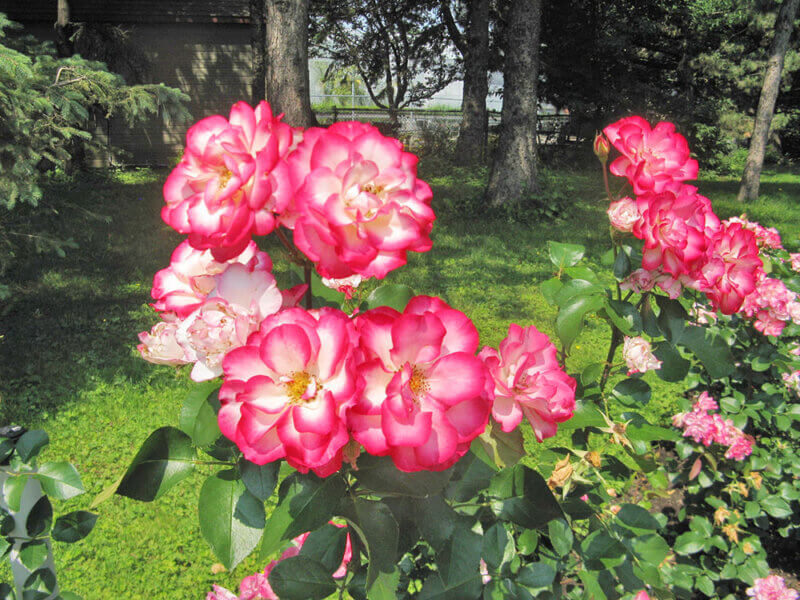A good rose garden needs planning
Who doesn’t love the smell of roses (Rosaceae) and the beauty of a rose bush in full bloom?
When planning a rose garden, the first thing to consider is location. This includes not only how large (or small) an area you can devote to growing roses, but also the soil, moisture levels and other environmental conditions.
Roses will grow best with six to eight hours of direct sunlight daily. Sites shaded by structures or trees may not provide enough light. Observe your proposed site throughout the course of a sunny day to confirm areas of sun and shade. In addition, strong winds can damage roses, so a location providing some protection is preferable.

All varieties of roses require six to eight hours of direct sunlight daily and prefer rich, loose soil, with a healthy amount of organic matter, good drainage and a pH of around 6.5.
Roses prefer rich, loose soil, with a healthy amount of organic matter, good drainage and a pH of around 6.5. A soil test will not only provide information concerning pH, but also soil type, organic matter present and even plant-specific recommendations regarding soil amendments. For more information on obtaining a soil test, visit the University of Vermont Agricultural and Environmental Testing Lab website at go.uvm.edu/soiltest.
Once you have your soil test results, you can make amendments to the soil as needed. If your soil is very poor, extremely rocky or otherwise unsuitable, consider using raised beds. That way, you can create a soil mix to meet the needs of your roses and provide structure in your garden.
Water is another factor to consider. While established roses may not need supplemental watering, newly planted roses should be kept well-watered (but not soggy) to encourage good growth and health. A watering can will work well for a single rose bush, but if your plans include multiple roses, access to a convenient water source is a big plus.
Once you’ve selected a location, the fun begins — choosing roses for your garden. Depending on the variety, roses are hardy in Zones 3-11. To learn more about U.S. Department of Agriculture plant hardiness zones, see planthardiness.ars.usda.gov.
Keep in mind that to remain healthy, roses need good air circulation, so plan spacing (and the number of roses) based on their anticipated mature size. Allow plenty of room (about 24-36 inches) between plants.
There are many different types of roses, such as groundcover, shrub, hybrid tea (good for cut flowers), miniatures and climbing roses you can train to cover a trellis or arbor. Each has its own characteristics and a wide variety of colors from which to choose.
When selecting roses, you’ll come across terms such as “grafted,” meaning the top portion of the rose has been joined to the roots of another, resulting in a stronger plant. Other varieties are grown on their “own roots.”
Roses are available for purchase “bare root” or in pots. You’ll want to soak bare root roses in water for 8 to 12 hours then plant as soon as possible after purchasing. Potted roses can be planted at any time, but be sure to keep them well watered until planting.
It’s not just roses that will make your rose garden special. Include a bench or seating area to sit and relax to enjoy the garden.
Companion plants can add interest. Consider low growing perennials such as cat mint (Nepeta) and lady’s mantle (Alchemilla) or annuals such as marigolds (Tagetes). Whatever you choose, be sure to plant them at least a foot away from the base of the rose so they won’t impede air circulation or compete with the roses for nutrients.
Whether you would like to grow one, three or a dozen different roses, a rose garden just takes a little planning. And isn’t that half the fun?
(Deborah J. Benoit is a University of Vermont Extension master gardener from North Adams, Massachusetts, who is part of the Bennington County Chapter.)
